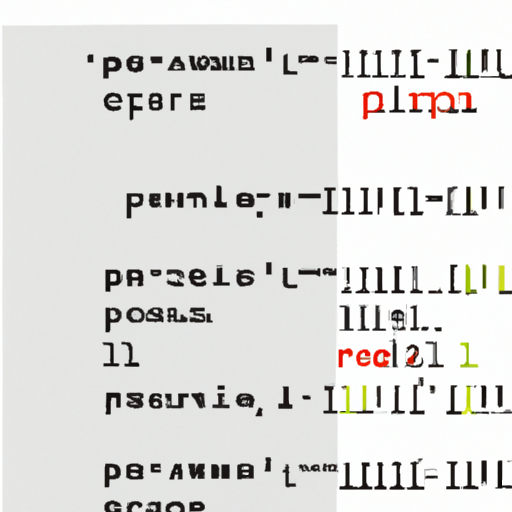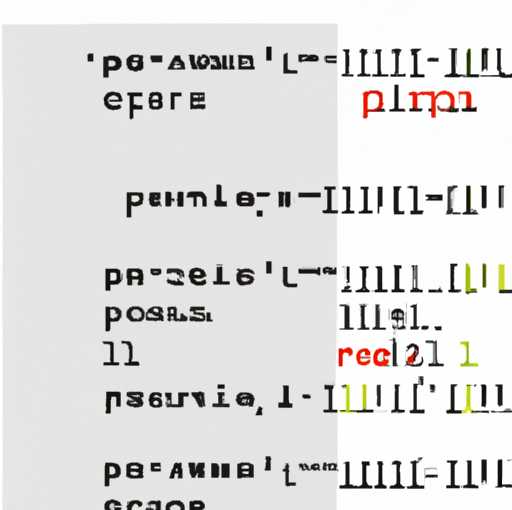-
Lucks Casino Professional Article Collection
- Introduction
- How to Join Two Dataframes in R Using the Merge Function
- Exploring Different Types of Joins in R
- Understanding the Left, Right, and Inner Joins in R
- Working with Multiple Columns When Joining Dataframes in R
- Combining Dataframes with Different Number of Columns in R
- Merging Dataframes with Duplicate Column Names in R
- Troubleshooting Common Issues When Joining Dataframes in R
- Optimizing Performance When Joining Large Datasets in R
- Creating a New Column After Joining Two Dataframes in R
- Merging Time Series Dataframes by Date in R
- Combining Multiple Datasets into One Dataframe in R
- Using the dplyr Package to Join Two Dataframes in R
- Applying Conditional Statements When Joining Two Dataframes in R
- Q&A
- Conclusion
"Unlock the Energy of Your Knowledge with R Join Dataframe By Two Columns!"
Introduction
R be part of dataframe by two columns is a robust software for combining knowledge from two totally different dataframes. It means that you can be part of two dataframes primarily based on the values of two columns, which can be used to create new insights and evaluation. This system is particularly helpful when coping with giant datasets, because it can help scale back the period of time spent manually becoming a member of knowledge. On this article, we'll focus on the best way to use R be part of dataframe by two columns and supply examples of the way it can be used in apply.
How you can Join Two Dataframes in R Utilizing the Merge Operate
The merge operate in R is a robust software for combining two dataframes. It permits customers to affix two dataframes primarily based on one or more widespread variables between them. This can be used to mix datasets from totally different sources, or so as to add further information to an current dataset.
To make use of the merge operate, step one is to specify the dataframes that will probably be joined. This is executed by passing the names of the dataframes as arguments to the merge operate. The second step is to specify which variables will probably be used for becoming a member of the 2 dataframes. This is executed by specifying the by argument, which ought to comprise a vector of column names which might be widespread between each dataframes.
As soon as these steps have been accomplished, the merge operate will return a brand new dataframe containing the entire columns from each of the unique dataframes, with rows comparable to observations that match on the entire specified columns. If there are any observations in both dataset that shouldn't have an identical statement in the other dataset, they are going to be omitted from the ensuing merged dataset.
Along with becoming a member of two datasets primarily based on widespread variables, it is additionally doable to affix datasets utilizing further standards equivalent to logical circumstances or capabilities. For instance, in the event you wished to affix two datasets primarily based on whether or not or not a certain worth was better than one other worth, you could possibly use an ifelse assertion throughout the by argument of the merge operate. Equally, in the event you wished to affix two datasets primarily based on whether or not or not a certain worth was inside a certain vary, you could possibly use a subsetting operate throughout the by argument of the merge operate.
Total, utilizing the merge operate in R supplies an environment friendly and highly effective method for combining two datasets into one bigger dataset. By specifying which variables needs to be used for becoming a member of and any further standards that needs to be utilized throughout merging, customers can shortly and simply create merged datasets that comprise solely related information from each sources.
Exploring Totally different Kinds of Joins in R
Joins are a robust software in R that permit customers to mix knowledge from a number of sources. Joins can be used to affix two or more tables collectively, permitting customers to research knowledge from a number of sources in one place. There are a number of various kinds of joins accessible in R, every with its personal benefits and downsides. On this article, we'll discover the various kinds of joins accessible in R and focus on when every type needs to be used.
The primary type of be part of is the inside be part of. An inside be part of combines two tables by matching up rows which have the identical values in a specified column or columns. This type of be part of is helpful once you need to mix knowledge from two tables which have some widespread parts. For instance, in the event you had two tables containing buyer information, an inside be part of could possibly be used to mix the 2 tables primarily based on buyer ID.
The second type of be part of is the left outer be part of. A left outer be part of combines two tables by matching up rows which have the identical values in a specified column or columns after which including any further rows from the left table that don't match up with any rows from the best table. This type of be part of is helpful once you need to include the entire knowledge from one table whereas solely together with matching knowledge from one other table. For instance, in the event you had two tables containing buyer information, a left outer be part of could possibly be used to mix the 2 tables primarily based on buyer ID whereas nonetheless together with all prospects from the left table even when they don't have a corresponding entry in the best table.
The third type of be part of is the best outer be part of. A proper outer be part of works equally to a left outer be part of however as a substitute provides any further rows from the best table that don't match up with any rows from the left table. This type of be part of is helpful once you need to include the entire knowledge from one table whereas solely together with matching knowledge from one other table but in addition together with any further entries in the best table that shouldn't have a corresponding entry in the left table.
The fourth type of be part of is a full outer be part of. A full outer be part of combines two tables by matching up rows which have the identical values in a specified column or columns after which including any further rows from both aspect that don't match up with any rows on both aspect. This type of be part of is helpful once you need to include the entire knowledge from each tables no matter whether or not there are matches between them or not.
Lastly, there is additionally an anti-be part of which works equally to an inside-be part of however as a substitute returns solely these information which don't match between two tables somewhat than these which do match as an inside-be part of would return. This type of be part of can be helpful for locating information that are distinctive between two datasets or for locating information which exist in one dataset however not one other dataset.
In conclusion, there are a number of various kinds of joins accessible in R and every has its personal benefits and downsides relying on what sort of evaluation you are attempting to carry out together with your knowledge units. Understanding these differing kinds can help you make higher selections about how finest to mix your datasets for evaluation functions and ensure that your outcomes are correct and significant.
Understanding the Left, Proper, and Interior Joins in R
Joins are a robust software in R that permit customers to mix knowledge from a number of sources. Joins are used to mix knowledge from two or more tables primarily based on a standard discipline or set of fields. There are three kinds of joins in R: left, proper, and inside.
A left be part of combines all of the rows from the left table with the matching rows from the best table. If there is no match, then the row from the left table will probably be included with NULL values for all columns from the best table. This type of be part of is helpful once you need to include all information from one table, even when there is no match in the other table.
A proper be part of combines all of the rows from the best table with the matching rows from the left table. If there is no match, then the row from the best table will probably be included with NULL values for all columns from the left table. This type of be part of is helpful once you need to include all information from one table, even when there is no match in the other table.
An inside be part of combines solely these rows which have matches in each tables. This type of be part of is helpful once you need to include solely these information which have matches in each tables.
By understanding how every type of be part of works, customers can successfully use joins to mix knowledge from a number of sources and create significant outcomes.
Working with A number of Columns When Becoming a member of Dataframes in R
When becoming a member of dataframes in R, it is vital to contemplate the a number of columns that may be concerned. This is as a result of the dataframes may have totally different column names and/or totally different numbers of columns. With the intention to be part of two dataframes, you will need to specify which columns needs to be used for the be part of.
The commonest technique to be part of two dataframes is by utilizing the merge() operate. This operate means that you can specify which columns needs to be used for the be part of. For instance, in case you have two dataframes with the identical column names, you can use the next syntax:
merge(dataframe1, dataframe2, by = c("column1", "column2"))
This can be part of the 2 dataframes on the desired columns. If one of many dataframes has more columns than the other, you can use further arguments to specify which columns needs to be included in the be part of. For instance:
merge(dataframe1, dataframe2, by = c("column1", "column2"), all = TRUE)
This can include the entire columns from each dataframes in the be part of. You can additionally use further arguments equivalent to “left_on” and “right_on” to specify which columns needs to be used for both sides of the be part of.




It is vital to notice that when becoming a member of two dataframes with a number of columns, any rows that don't match on the entire specified columns is not going to be included in the ensuing dataset. Due to this fact, it is vital to ensure that your datasets are correctly formatted earlier than trying a be part of with a number of columns.
Combining Dataframes with Totally different Variety of Columns in R
When working with knowledge in R, it is usually crucial to mix two or more dataframes with totally different numbers of columns. This can be executed utilizing the merge() operate, which lets you be part of two dataframes primarily based on a standard column or set of columns.
The syntax for the merge() operate is as follows:
merge(x, y, by = "common_column", all = FALSE)
The place x and y are the 2 dataframes being merged, and “common_column” is the column or set of columns that will probably be used to affix the 2 dataframes. The “all” argument specifies whether or not all rows from each dataframes needs to be included in the output (TRUE) or solely these rows that match in each dataframes (FALSE).
For instance, if we've two dataframes df1 and df2 with totally different numbers of columns, we can use the next code to merge them:
merged_df <- merge(df1, df2, by = c("col1", "col2"), all = TRUE)
This can create a brand new dataframe referred to as “merged_df” that comprises all rows from each df1 and df2. The columns from every dataframe will probably be mixed into one single table. Any rows that shouldn't have matching values in the desired columns will comprise NA values.
It is vital to notice that when merging two dataframes with totally different numbers of columns, any further columns from both dataframe will probably be added to the tip of the merged table. Which means if one in every of your dataframes has more columns than the other, these further columns may not seem in their unique order. To ensure that your merged table comprises your entire desired columns in their appropriate order, you can specify which columns ought to seem first utilizing the choose() operate earlier than merging.
In abstract, combining two or more dataframes with totally different numbers of columns in R can be executed utilizing the merge() operate. This lets you be part of two tables primarily based on a standard column or set of columns and specify whether or not all rows needs to be included in the output or solely these rows that match in each tables. Moreover, it is vital to notice that any further columns from both table will probably be added to the tip of the merged table and may not seem in their unique order.
Merging Dataframes with Duplicate Column Names in R
When working with dataframes in R, it is widespread to come across duplicate column names. This can happen when merging two dataframes or when importing knowledge from a file. Duplicate column names can trigger confusion and errors when attempting to entry the information, so it is vital to know the best way to deal with them.
The only technique to cope with duplicate column names is to make use of the make.distinctive() operate. This operate takes a personality vector of column names and returns a modified model of the vector with distinctive names. For instance, in case you have two columns named “Title” in your dataframe, make.distinctive() will return “Name_1” and “Name_2” as the brand new column names.
Another choice is to make use of the rename() operate from the dplyr package deal. This operate means that you can specify which columns needs to be renamed and what their new names needs to be. For instance, in case you have two columns named “Title” in your dataframe, you could possibly use rename(Title = c("Name_1", "Name_2")) to rename them each without delay.
Lastly, if you're merging two dataframes which have duplicate column names, you can use the merge() operate from base R or the be part of() operate from dplyr. Each capabilities mean you can specify which columns needs to be used for the merge and the way they need to be dealt with if there are duplicates. For instance, if you're merging two dataframes that each have a “Title” column, you could possibly use merge(x = df1, y = df2, by = "Title", all = TRUE) or be part of(df1, df2, by = "Title") to maintain the entire values from each dataframes in one merged dataframe with distinctive column names.
By utilizing these strategies, you can simply deal with duplicate column names when working with dataframes in R.
Troubleshooting Frequent Points When Becoming a member of Dataframes in R
Becoming a member of dataframes in R is a robust software for knowledge evaluation. Nonetheless, it can be troublesome to troubleshoot when points come up. This article will present steerage on the best way to establish and resolve widespread points when becoming a member of dataframes in R.
Step one in troubleshooting is to establish the source of the problem. Frequent sources of errors include incorrect column names, mismatched knowledge sorts, and lacking values. It is vital to check that the column names are similar between the 2 dataframes and that the information sorts are suitable. Moreover, any lacking values needs to be addressed earlier than trying to affix the dataframes.
As soon as the source of the problem has been recognized, there are a number of strategies for resolving it. If the column names aren't similar, they can be renamed utilizing the rename() operate or by utilizing dplyr’s choose() operate with a listing of desired column names. If there are mismatched knowledge sorts, they can be transformed utilizing as.character(), as.numeric(), or as.issue(). Lacking values can be addressed by both eradicating them with na.omit() or changing them with a worth equivalent to 0 or NA utilizing fill().
Lastly, it is vital to check that the be part of was profitable by inspecting the ensuing dataframe for any sudden outcomes or errors. If any errors live after addressing the source of the problem, it may be crucial to make use of further capabilities equivalent to left_join(), right_join(), inner_join(), or full_join() relying on what type of be part of is wanted to your evaluation.
By following these steps, you need to have the ability to efficiently be part of two dataframes in R and avoid widespread points alongside the best way.
Optimizing Efficiency When Becoming a member of Massive Datasets in R
Becoming a member of giant datasets in R can be a difficult activity, particularly when efficiency is a precedence. Happily, there are a number of methods that can be employed to optimize the efficiency of such operations. This article will focus on among the handiest methods for optimizing the efficiency of becoming a member of giant datasets in R.
First, it is vital to grasp the various kinds of joins accessible in R. The commonest be part of sorts are inside joins, left outer joins, proper outer joins, and full outer joins. Every type of be part of has its personal benefits and downsides, so it is vital to decide on the one which most closely fits your needs. Moreover, it is vital to contemplate the dimensions of the datasets being joined and the way they're structured earlier than deciding on a be part of type.
Second, it is vital to think about using an index when becoming a member of giant datasets in R. An index can help pace up the method by permitting R to shortly find information that match certain standards. Moreover, indexes can additionally help scale back reminiscence utilization by avoiding pointless knowledge duplication. It is vital to notice that not all knowledge sorts support indexing; subsequently, it is vital to check in case your knowledge type helps indexing earlier than trying to make use of one.
Third, it is additionally doable to optimize efficiency by utilizing vectorized operations as a substitute of looping by way of every document individually. Vectorized operations mean you can carry out a number of operations on a number of information without delay, which can considerably scale back processing time and enhance efficiency. Moreover, vectorized operations can additionally help scale back reminiscence utilization by avoiding pointless knowledge duplication.
Lastly, it is additionally doable to optimize efficiency by utilizing parallel processing when becoming a member of giant datasets in R. Parallel processing means that you can break up up duties into smaller chunks and run them concurrently on a number of cores or processors. This can considerably scale back processing time and enhance general efficiency when coping with giant datasets.
By following these methods for optimizing the efficiency of becoming a member of giant datasets in R, you need to have the ability to obtain higher outcomes with much less time and effort spent on the duty.
Making a New Column After Becoming a member of Two Dataframes in R
When working with knowledge in R, it is usually crucial to affix two dataframes collectively. This can be executed utilizing the merge() operate. After becoming a member of two dataframes, it is doable to create a brand new column that mixes information from each of the unique dataframes. This can be executed by specifying the column identify and the values that needs to be included in the brand new column.
To start, use the merge() operate to affix two dataframes collectively. The syntax for this operate is as follows: merge(x, y, by = "column_name"). The x and y parameters seek advice from the 2 dataframes which might be being joined collectively, and the by parameter specifies which column needs to be used for becoming a member of.
As soon as the 2 dataframes have been joined collectively, a brand new column can be created utilizing the mutate() operate. The syntax for this operate is as follows: mutate(dataframe_name, new_column_name = expression). The expression parameter is the place you specify what values needs to be included in the brand new column. For instance, in the event you wished to create a brand new column that mixed information from each of the unique dataframes, you could possibly use an expression equivalent to “x$column1 + y$column2”. This is able to add collectively values from columns 1 and a pair of in every of the unique dataframes and retailer them in a brand new column referred to as “new_column_name”.
By utilizing these capabilities, it is doable to simply create a brand new column after becoming a member of two dataframes in R. This can be helpful for combining information from a number of sources or creating abstract statistics from a number of datasets.
Merging Time Collection Dataframes by Date in R
When working with time collection knowledge, it is usually essential to merge two or more dataframes by date. This can be executed in R utilizing the merge() operate. The merge() operate means that you can be part of two dataframes primarily based on one or more widespread columns, equivalent to a date column.
To start, you'll need to create two dataframes that comprise the identical date column. This column needs to be formatted as a Date object in R. As soon as the dataframes are created, you can use the merge() operate to affix them collectively. The syntax for this is:
merge(dataframe1, dataframe2, by = "date")
The “by” argument specifies which column needs to be used for the merging course of. On this case, it is the “date” column. You can additionally specify further columns to affix on if wanted. For instance:
merge(dataframe1, dataframe2, by = c("date", "id"))
This can be part of the 2 dataframes on each the “date” and “id” columns.
As soon as the 2 dataframes are merged, you can entry the mixed dataset utilizing the ensuing object from the merge() operate. This object comprises the entire columns from each of the unique datasets and any further columns that have been specified in the “by” argument.
Merging time collection dataframes by date in R is a easy course of that can be achieved utilizing the merge() operate. By specifying a standard date column and any further columns wanted for becoming a member of, you can shortly and simply mix two or more datasets into one unified dataset for additional evaluation.
Combining A number of Datasets into One Dataframe in R
Combining a number of datasets into one dataframe in R is a helpful ability for any knowledge analyst. It means that you can mix totally different sources of information right into a single, unified dataset that can be used for additional evaluation. This article will present an summary of the method and focus on among the commonest strategies for combining datasets in R.
Step one in combining a number of datasets into one dataframe is to read every dataset into R. This can be executed utilizing the read.csv() or read.table() capabilities, relying on the format of the information. As soon as the entire datasets have been read into R, they can be mixed utilizing both the merge() or rbind() capabilities.
The merge() operate is used when two or more datasets have widespread variables that can be used to affix them collectively. For instance, if two datasets comprise buyer information and each have a “customer_id” variable, then these two datasets can be merged collectively utilizing this variable as a key. The syntax for this is able to look one thing like:
merge(dataset1, dataset2, by = "customer_id")
The rbind() operate is used when there are not any widespread variables between two or more datasets and so they want to be mixed by row. This is usually used when combining a number of observations from totally different sources into one dataset. The syntax for this is able to look one thing like:
rbind(dataset1, dataset2)
As soon as the entire datasets have been mixed into one dataframe, it is vital to check that the entire variables are appropriately formatted and that there are not any lacking values or duplicates. This can be executed utilizing abstract statistics and visualizations equivalent to histograms and boxplots.
In conclusion, combining a number of datasets into one dataframe in R is a helpful ability for any knowledge analyst. By understanding the best way to use the merge() and rbind() capabilities, it is doable to shortly mix totally different sources of information right into a single unified dataset that can then be used for additional evaluation.
Utilizing the dplyr Bundle to Join Two Dataframes in R
The dplyr package deal in R is a robust software for knowledge manipulation and evaluation. It supplies a set of capabilities that permit customers to shortly and simply be part of two dataframes. Becoming a member of two dataframes is a standard activity in knowledge evaluation, because it permits customers to mix information from a number of sources into one dataset.
To hitch two dataframes utilizing the dplyr package deal, the person should first load the package deal into their R session. This can be executed by operating the command “library(dplyr)”. As soon as the package deal is loaded, the person can use the “left_join()” operate to affix two dataframes. This operate takes two arguments: the primary argument is the left dataframe, and the second argument is the best dataframe. The left_join() operate will then return a brand new dataframe that comprises the entire columns from each of the unique dataframes.
Along with becoming a member of two dataframes, dplyr additionally supplies a number of other capabilities for manipulating and analyzing datasets. These include capabilities for filtering, sorting, summarizing, and reworking datasets. By combining these capabilities with left_join(), customers can shortly and simply manipulate giant datasets in R.
Making use of Conditional Statements When Becoming a member of Two Dataframes in R
When becoming a member of two dataframes in R, it is usually crucial to use conditional statements to ensure that the information is joined appropriately. This can be executed utilizing the “ifelse” operate, which lets you specify a situation after which outline what ought to occur if the situation is met or not met. For instance, in the event you wished to affix two dataframes primarily based on a standard column, you could possibly use the next code:
joined_dataframe <- merge(dataframe1, dataframe2, by = "common_column", all = TRUE, ifelse(dataframe1$common_column == dataframe2$common_column, TRUE, FALSE))
This code will be part of the 2 dataframes primarily based on the widespread column specified. If the values in the widespread column of each dataframes match, then they are going to be joined collectively; in any other case, they won't be joined. This ensures that solely matching information are included in the ensuing joined dataframe.
It is additionally doable to make use of a number of circumstances when becoming a member of two dataframes. For instance, in the event you wished to affix two dataframes primarily based on two widespread columns (e.g., “first_name” and “last_name”), you could possibly use the next code:
joined_dataframe <- merge(dataframe1, dataframe2, by = c("first_name", "last_name"), all = TRUE, ifelse((dataframe1$first_name == dataframe2$first_name) & (dataframe1$last_name == dataframe2$last_name), TRUE, FALSE))
This code will be part of the 2 dataframes primarily based on each of the desired columns. If each of those columns match between each of the datasets then they are going to be joined collectively; in any other case they won't be joined. This ensures that solely information with matching values in each columns are included in the ensuing joined dataset.
By utilizing conditional statements when becoming a member of two datasets in R, you can ensure that solely related information are included in your ensuing dataset. This can help enhance accuracy and scale back errors when working with giant datasets.
Q&A
1. What is the aim of becoming a member of two dataframes by two columns?
The aim of becoming a member of two dataframes by two columns is to mix the information from each dataframes right into a single dataset primarily based on a shared key or set of keys. This enables for more environment friendly evaluation and manipulation of the mixed knowledge.
Conclusion
The R be part of dataframe by two columns function is a robust software for combining knowledge from a number of sources. It permits customers to shortly and simply be part of two dataframes primarily based on widespread columns, making it a useful software for knowledge evaluation and manipulation. With its flexibility and ease of use, the R be part of dataframe by two columns function is a good way to shortly and simply mix knowledge from a number of sources.



